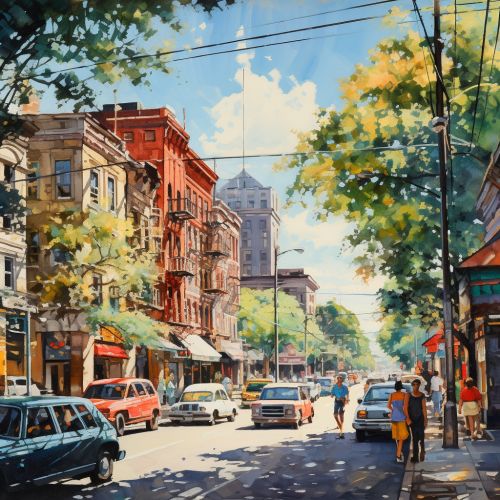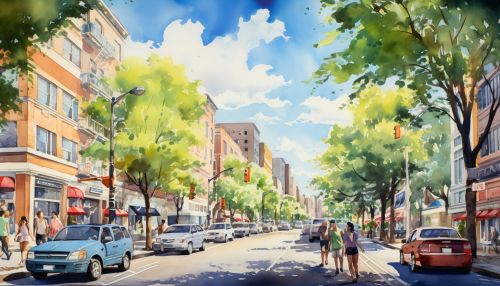The Bronx
History
The Bronx, the northernmost of the five boroughs of New York City, has a rich and diverse history. The borough was named after Jonas Bronck, a Swedish sea captain who settled in the area in 1639. The Bronx was originally part of Westchester County until it was annexed by New York City in two stages in 1874 and 1895.
The Bronx's history is marked by periods of rapid growth and development, as well as periods of decline and renewal. The borough's early history was largely rural, with farms and estates dotting the landscape. However, the arrival of the railroad in the mid-19th century spurred industrial development and population growth.
In the early 20th century, the Bronx was a thriving, middle-class borough with a vibrant cultural scene. The borough was home to many iconic landmarks, including the Bronx Zoo, the New York Botanical Garden, and Yankee Stadium, which opened in 1923.
However, the mid-20th century brought significant changes to the Bronx. Post-World War II suburbanization, coupled with urban renewal projects and highway construction, led to a decline in the borough's population and the deterioration of many neighborhoods. The 1970s and 1980s were particularly difficult times for the Bronx, with widespread poverty, crime, and arson.
In recent decades, the Bronx has experienced a resurgence. Efforts to revitalize the borough have led to the redevelopment of many neighborhoods and the creation of new housing and commercial developments. Today, the Bronx is a diverse and vibrant borough, home to a rich tapestry of cultures and communities.


Geography
The Bronx is located in the northern part of New York City, bordered by Westchester County to the north, the Hudson River to the west, the East River to the south, and Long Island Sound to the east. The borough is characterized by its diverse geography, which includes urban areas, parkland, and waterfront.
The Bronx is divided into several distinct regions. The South Bronx, which includes neighborhoods such as Mott Haven and Hunts Point, is known for its industrial areas and housing projects. The West Bronx, which includes neighborhoods such as Riverdale and Kingsbridge, is characterized by its hilly terrain and large apartment buildings. The East Bronx, which includes neighborhoods such as Throggs Neck and City Island, is known for its suburban-style homes and waterfront communities.
The Bronx is home to several large parks, including Pelham Bay Park, the largest park in New York City, and Van Cortlandt Park, which features a large forest and a historic house museum. The borough is also home to several bodies of water, including the Bronx River, the only freshwater river in New York City.
Demographics
The Bronx is one of the most ethnically diverse places in the United States. The borough is home to a large number of immigrants, with residents hailing from countries around the world. The largest ethnic groups in the Bronx are Latinos, African Americans, and Whites, with significant populations of Caribbean, Italian, and Irish descent.
The Bronx is also characterized by its linguistic diversity. In addition to English, many residents speak Spanish, Italian, Albanian, and various African languages. The borough is home to a number of cultural institutions that celebrate its diversity, including the Bronx Museum of the Arts, the Bronx Music Heritage Center, and the Hostos Center for the Arts & Culture.
Economy
The Bronx has a diverse economy, with sectors including healthcare, education, retail, and manufacturing playing significant roles. The borough is home to several major employers, including Montefiore Medical Center, the largest employer in the Bronx, and Fordham University, one of the borough's largest educational institutions.
The Bronx also has a growing tech sector, with a number of tech startups and coworking spaces located in the borough. The South Bronx, in particular, has been a focus of recent economic development efforts, with new housing and commercial developments transforming the area.
Despite these positive trends, the Bronx faces significant economic challenges. The borough has one of the highest poverty rates in the country, and many residents struggle with issues such as unemployment, low wages, and lack of access to affordable housing.
Culture
The Bronx has a rich cultural heritage and has made significant contributions to music, art, and literature. The borough is often credited as the birthplace of hip hop, a genre that emerged in the South Bronx in the 1970s. The Bronx is also home to a vibrant arts scene, with numerous galleries, theaters, and performance spaces.
The Bronx has a strong sports culture, with the New York Yankees baseball team being one of the borough's most iconic institutions. The borough is also home to several cultural and educational institutions, including the Bronx Museum of the Arts, the Bronx Zoo, and the New York Botanical Garden.
Education
The Bronx is served by the New York City Department of Education, the largest school district in the United States. The borough is home to a number of public, private, and charter schools, as well as several institutions of higher education, including Fordham University, Lehman College, and the Albert Einstein College of Medicine.
Despite the presence of these institutions, the Bronx faces significant educational challenges. Many schools in the borough are under-resourced, and student performance on standardized tests is often below the citywide average. Efforts are underway to improve educational outcomes in the borough, including initiatives to increase access to early childhood education and to improve the quality of instruction in Bronx schools.
Infrastructure
The Bronx is served by an extensive transportation network, including several subway lines, numerous bus routes, and two commuter rail lines. The borough is also home to several major highways, including the Cross Bronx Expressway, one of the busiest highways in the United States.
The Bronx's infrastructure also includes several hospitals and healthcare facilities, including Montefiore Medical Center, one of the largest healthcare providers in the Bronx. The borough also has a number of public housing developments, managed by the New York City Housing Authority.
Despite these resources, the Bronx faces significant infrastructure challenges. Many of the borough's roads, bridges, and public buildings are in need of repair or replacement. In addition, the borough's public housing developments are often poorly maintained and lack adequate funding for repairs and improvements.
